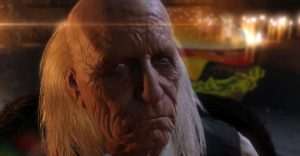Essential Clone Wars Episodes To Watch (& Understand The Mandalorian)

The Mandalorian explores the culture and customs of Mandalorians in the Star Wars canon continuity, whose foundation is found in episodes of Star Wars: The Clone Wars. The Mandalorian also featured the live-action debut of key Clone Wars characters Ahsoka Tano and Bo-Katan Kryze, whose characterizations and goals continue from where they were left off in Star Wars Rebels. The fan-favorite bounty hunter Boba Fett also returns in The Mandalorian, evidently having been found somewhat indigestible by the sarlacc in Return of the Jedi. Boba and his father Jango’s status as true Mandalorians in canon was ambiguous until The Mandalorian definitively cleared things up, answering a question raised in The Clone Wars.
While the original timeline, the Expanded Universe (now Star Wars Legends), was developing Mandalorian culture since the ‘80s, the canon timeline contradicted much of it in The Clone Wars. After Disney acquired Lucasfilm, the Expanded Universe was renamed Legends and became an alternate timeline, leaving The Clone Wars as the first piece of canon material to explore Mandalorians. A long-term story arc for Mandalore began in The Clone Wars, was further developed in Rebels, and became the primary focus of The Mandalorian. Mandalore’s once-pacifist government was destabilized by the machinations of the former Sith Lord Maul and the Death Watch terrorist group, leaving the planet vulnerable to the Empire once the Clone Wars ended.
Along with the Mandalorians Bo-Katan Kryze, Din Djarin, and (to a degree) Boba Fett, the outsider Ahsoka Tano is intertwined into Mandalore’s multi-show plot thread as well. The padawan was one of the protagonists of The Clone Wars and the leader of Republic forces during the Siege of Mandalore. With her live-action debut in The Mandalorian season 2, several of her story arcs in The Clone Wars make her reappearance even more meaningful. Although The Clone Wars and The Mandalorian are enjoyable on their own, there are essential episodes of The Clone Wars that help viewers understand the lore and characters of The Mandalorian even more.
Death Watch Trilogy

The three-episode story arc of “The Mandalore Plot,” “Voyage of Temptation,” and “Duchess of Mandalore” features the canon continuity’s first exploration of Mandalorian culture and history. For untold years before the prequel trilogy, Mandalore’s government has been ruled by the pacifist “New Mandalorian” faction. Their warrior clans are in exile and Mandalore remains neutral during the Clone Wars. The trilogy also introduces the canon version of the Death Watch, a terrorist group seeking to reclaim Mandalore and restore its warrior culture. As seen in The Mandalorian, the Death Watch rescued a young Din Djarin from Separatist forces during the Clone Wars. The trilogy also contains the first appearance of the legendary Darksaber, wielded by Death Watch leader Pre Vizsla.
The New Mandalorian Prime Minister Almec also notably claims that Jango Fett is not a true Mandalorian, but rather a common bounty hunter who somehow acquired Mandalorian armor. As shown in The Mandalorian season 2, this is a false claim, as Jango Fett was a foundling who earned the right to wear his beskar armor and fought during the Mandalorian Civil Wars. If the canon version of war resembles its Legends counterpart, then Jango fought against the Death Watch, making Almec’s lies seem vindictive in hindsight (Almec joined the Death Watch later in the Clone Wars).
Boba Fett Trilogy

The Clone Wars season 2 ends with the episodes “Death Trap,” “R2 Come Home,” and “Lethal Trackdown,” in which a young Boba Fett seeks to avenge his father by killing Jedi Master Mace Windu. While Mandalorian culture is not explored in these episodes, Boba’s characterization is. Although Boba Fett grows up to become the best bounty hunter in the galaxy (and one of the most ruthless), this arc in The Clone Wars shows his few redeeming qualities.
Boba seeks revenge only on Mace, and he’s demonstrably sickened by the collateral damage his accomplices inflict. Boba is shown as an honorable mercenary in The Mandalorian, keeping his word to Din Djarin and helping rescue Grogu long after he reacquires his armor. The trilogy also mentions the late Jango’s strong sense of honor as noted by the pirate captain Hondo Ohnaka. With The Mandalorian season 2 confirming that Jango was indeed a true Mandalorian, this trait makes sense.
A Friend in Need

Having been absent in season 3, the Death Watch returns in season 4’s “A Friend in Need,” now headquartered on Carlac, where they terrorize the Ming Po (Carlac’s native human population). The episode also introduces the Death Watch second in command Bo-Katan Kryze, whose cruelty and brutality are in full display as she partakes in immolating a Ming Po village. Though largely portrayed as an ally of Din Djarin in The Mandalorian, Bo-Katan’s villainous nature returned in the season 2 finale. Since their last appearance, the Death Watch is no longer allied with the Separatist Alliance, explaining why they fought Separatist forces in Din Djarin’s home of Aq Vetina.
The Fall of Mandalore Trilogy

“Eminence,” “Shades of Reason,” and “The Lawless” show the end of the New Mandalorians and subsequent destabilization of Mandalore. The former Sith Lord Maul, having survived being bisected by Obi-Wan in the canon universe, allies with the Death Watch and other criminal organizations, becoming the Shadow Collective. After overthrowing Duchess Satine, Maul and Vizsla inevitably turn on each other, with Maul eventually killing Vizsla in a traditional Mandalorian duel for leadership.
Despite his now-rightful claim to both the Darksaber and Mandalore, Bo-Katan and a sizeable portion of the Death Watch refuse to refuse to acknowledge a non-Mandalorian as their leader, and thus another Mandalorian Civil War begins. The arc not only establishes the Mandalorian tradition of duels for the right to rule Mandalore but also Bo-Katan’s traditionalist views and hatred of outsiders.
Season 5 Finale Arc

In “Sabotage,” “The Jedi Who Knew Too Much,” “To Catch a Jedi,” and “The Wrong Jedi,” Ahsoka is wrongfully blamed for bombing the Jedi Temple. With Anakin and Captain Rex being among the few to believe in her innocence, Ahsoka flees pursuing Republic forces before eventually being recaptured. Though Anakin proves she was framed, Ahsoka chooses not to rejoin the Jedi Order, beginning her own path as a Force user instead.
This arc explains how and why Ahsoka left the Jedi Order, and also provides context to Ahsoka’s disillusionment with the prequel-era order. Ahsoka never officially ascended from her rank of padawan, thus never having become a true Jedi. When she meets Din Djarin and Grogu in The Mandalorian, she is a powerful and wise unaffiliated Force user but refuses to train Grogu, directing him and Din to the Jedi world of Tython instead.
Siege of Mandalore Arc

The four-part series finale of Star Wars: The Clone Wars includes “Old Friends Not Forgotten,” “The Phantom Apprentice,” “Shattered,” and “Victory and Death.” In this epic and tragic final story arc, Ahsoka, Rex, and Bo-Katan lead the Clone and Mandalorian resistance forces against Maul’s Shadow Collective in the climactic Siege of Mandalore during the Clone Wars. The campaign ends with the Clones’ victory over the Mandalorian loyalists, Maul’s capture, and Bo-Katan as regent of Mandalore, but Order 66 and the rise of the Galactic Empire quickly tarnishes the victory.
In addition to showing how Ahsoka survived Order 66, the Siege of Mandalore highlights her alliance with Bo-Katan. The arc also includes the only on-screen interactions between Kryze and Republic Clone Troopers, who Bo-Katan views dismissively in The Mandalorian (despite their proven track record of defeating Mandalorians in battle).
- Rogue Squadron (2023)Release date: Dec 22, 2023
About The Author

















